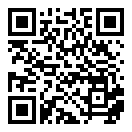Pages:
7-26
Receive Date: 2025/12/01
Accept Date: 2025/12/01
Abstract:
This research tries to develop the conceptual model of "anxiety" based on Islamic sources using the qualitative method of "content analysis". Thus, we first studied the definition of "anxiety" in psychology and extracted 12 concepts relating to anxiety from Islamic sources. Studying the validity of these concepts at this stage, we removed one concept and kept the remaining eleven concepts. Then we identified four components and eleven factors of anxiety in Islamic sources based on the data. We evaluated the components and factors with the help of eight experts of Islamic religion and psychology and analyzed them using the "content validity" index (CVI). The experts approved all components and factors. Explaining the relationship between the components, using Qur’anic verses and Islamic narrations, indicates that the cognitive component plays a role in creating anxiety and the emotional component causes physical and behavioral component to appear. Another outcome of this research is that the factors of anxiety are related to each other; and weak faith and worldliness are the most important factors of anxiety.
چکیده و کلیدواژه فارسی (Persian)
Title :الگوی مفهومی اضطراب براساس منابع اسلامی
Abstract:
این پژوهش درصدد تدوین الگوی مفهومی «اضطراب» براساس منابع اسلامی به روش کیفی «تحلیل محتوا» است. بدین منظور، ابتدا تعریف «اضطراب» در روان شناسی بررسی و براساس آن تعداد 12 مفهوم مرتبط با اضطراب از منابع اسلامی استخراج شد. نتایج حاصل از بررسی روایی در این مرحله، به حذف یک مفهوم و باقی ماندن یازده مفهوم دیگر منجر گردید. سپس براساس داده ها، چهار مؤلفه و یازده عامل برای اضطراب در منابع اسلامی شناسایی گردیدند. مؤلفه ها و عوامل توسط هشت کارشناس عرصه دین اسلام و روان شناسی ارزیابی و با استفاده از شاخص «روایی محتوایی» (CVI) تحلیل شدند. همه مؤلفه ها و عوامل توسط کارشناسان تأیید گردیدند. تبیین روابط بین مؤلفه ها با استفاده از آیات و روایات نشان داد مؤلفه شناختی نقش ایجاد گری در اضطراب دارد و مؤلفه هیجانی موجب بروز مؤلفه بدنی و رفتاری می شود. همچنین یافته ها نشان دادند عوامل اضطراب با یکدیگر در ارتباط بوده، ضعف ایمان و دنیاگرایی از اساسی ترین عوامل اضطراب به حساب می آیند.
Cite this article:
RIS
Mendeley
BibTeX
APA
MLA
HARVARD
VANCOUVER
APA | MLA | HARVARD | VANCOUVER
Jafari, Sadegh, Narooie Nosrati, Rahim, Nouralizadeh, Masuod.(2025) Conceptual Model of Anxiety Based on Islamic Sources. Ravanshenasi Wa Din, 16(1), 7-26
APA | MLA | HARVARD | VANCOUVER
Sadegh Jafari; Rahim Narooie Nosrati; Masuod Nouralizadeh."Conceptual Model of Anxiety Based on Islamic Sources". Ravanshenasi Wa Din, 16, 1, 2025, 7-26
APA | MLA | HARVARD | VANCOUVER
Jafari, S, Narooie Nosrati, R, Nouralizadeh, M.(2025) 'Conceptual Model of Anxiety Based on Islamic Sources', Ravanshenasi Wa Din, 16(1), pp. 7-26
APA | MLA | HARVARD | VANCOUVER
Jafari, S, Narooie Nosrati, R, Nouralizadeh, M. Conceptual Model of Anxiety Based on Islamic Sources. Ravanshenasi Wa Din, 2025; 16(1): 7-26
 / MA of Psychology at Imam Khomeini Educational and Research institute / jafari.s2472@gmail.com
/ MA of Psychology at Imam Khomeini Educational and Research institute / jafari.s2472@gmail.com / Assistant Professor of the Department of Psychology, Imam Khomeini Educational and Research Institute / naroei@iki.ac.ir
/ Assistant Professor of the Department of Psychology, Imam Khomeini Educational and Research Institute / naroei@iki.ac.ir



